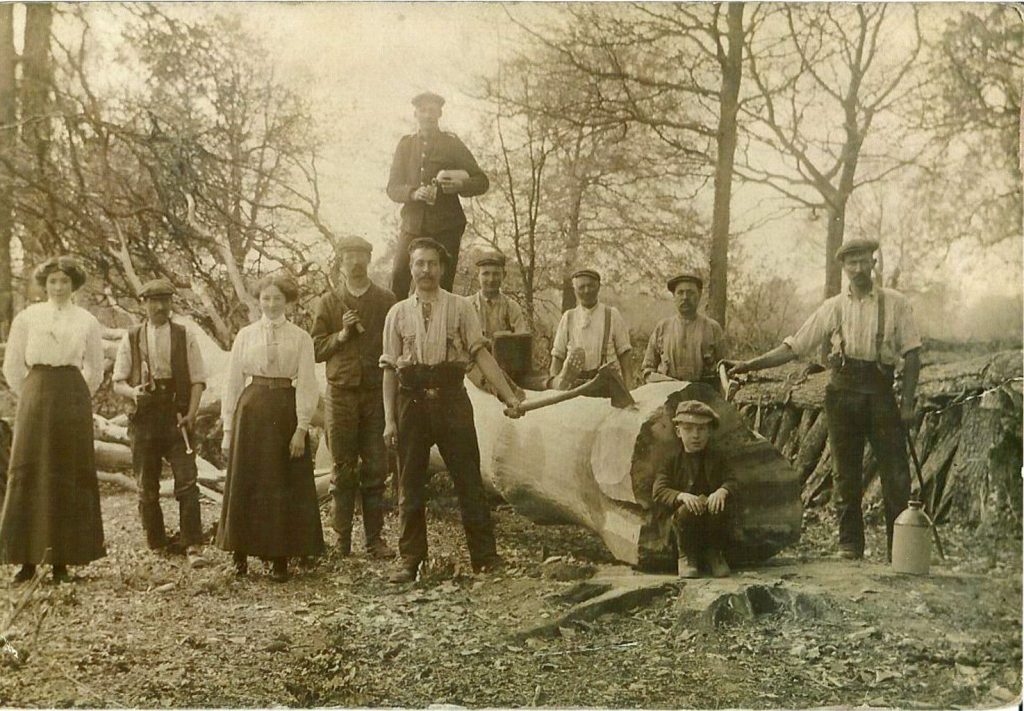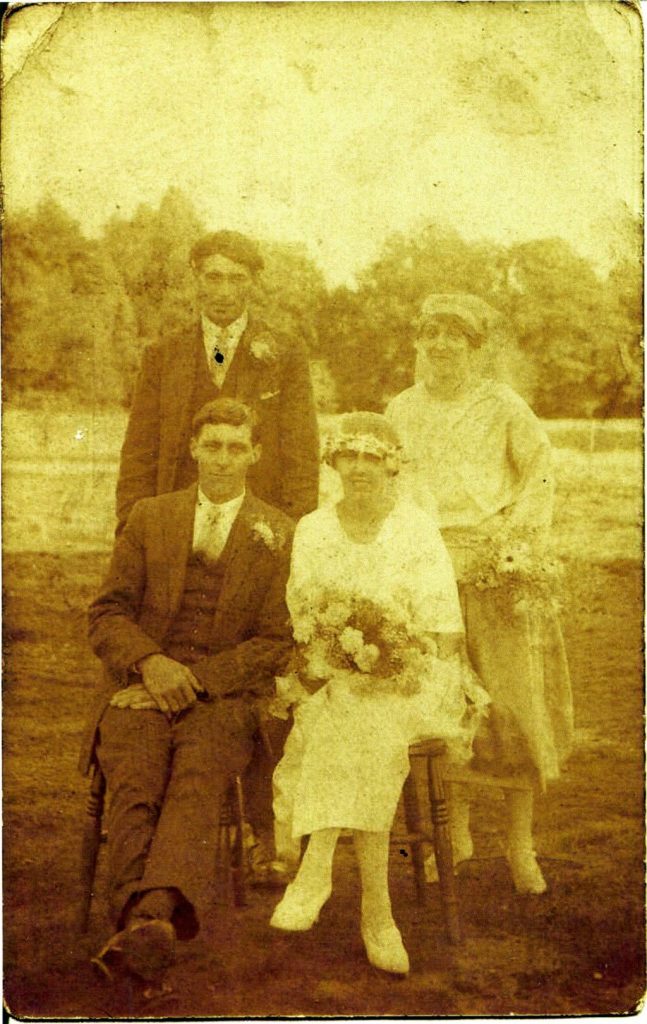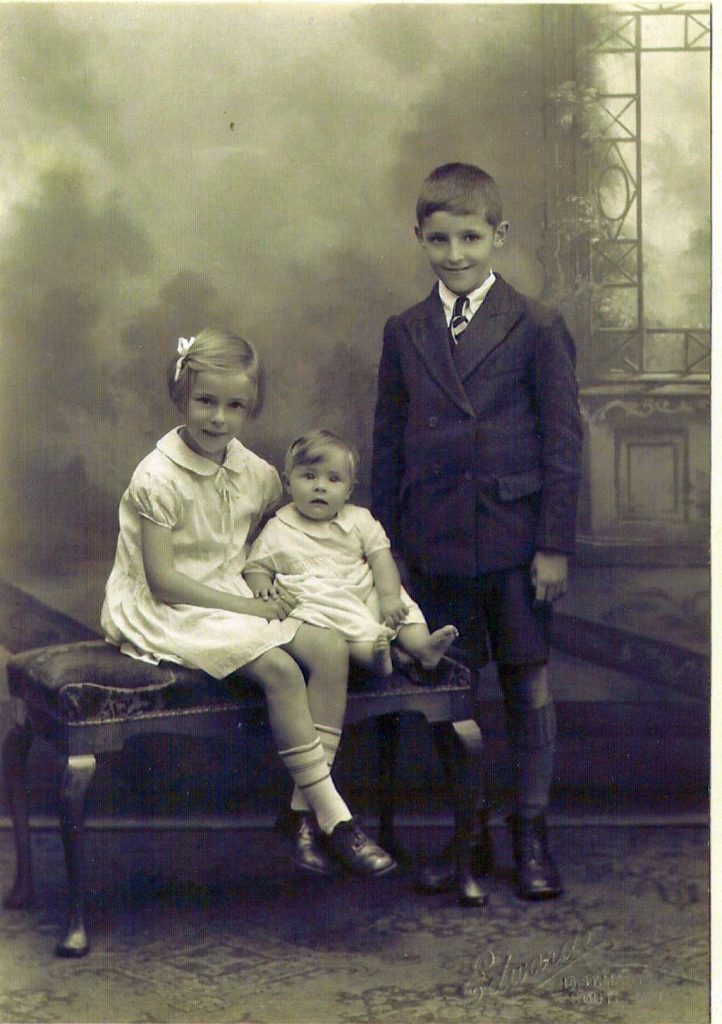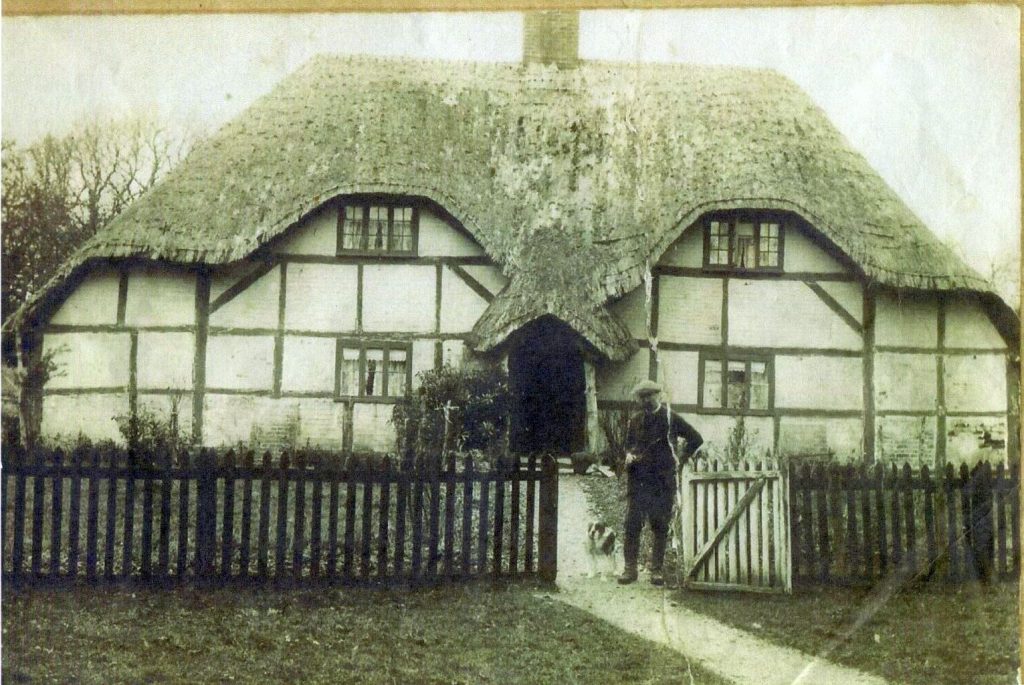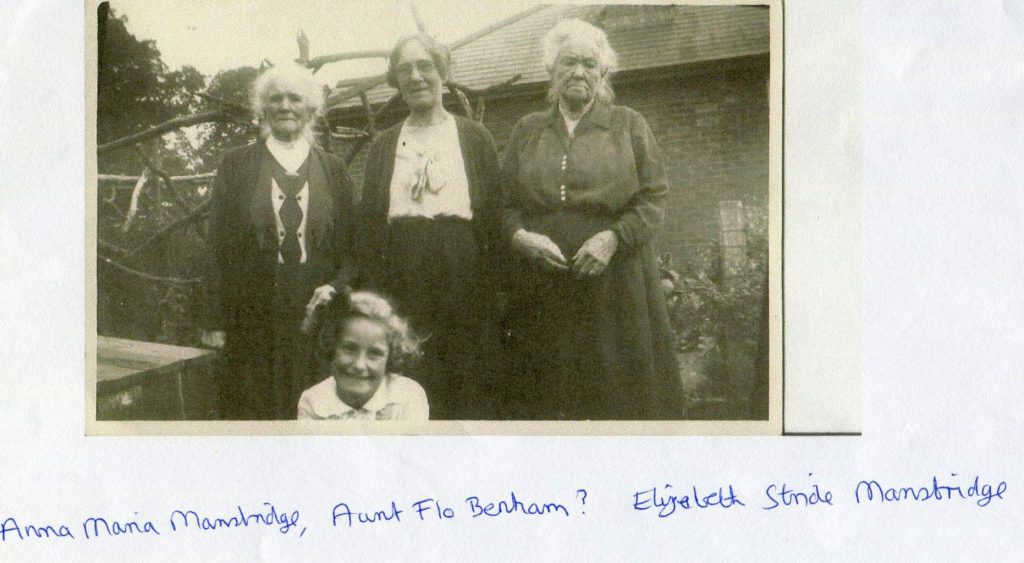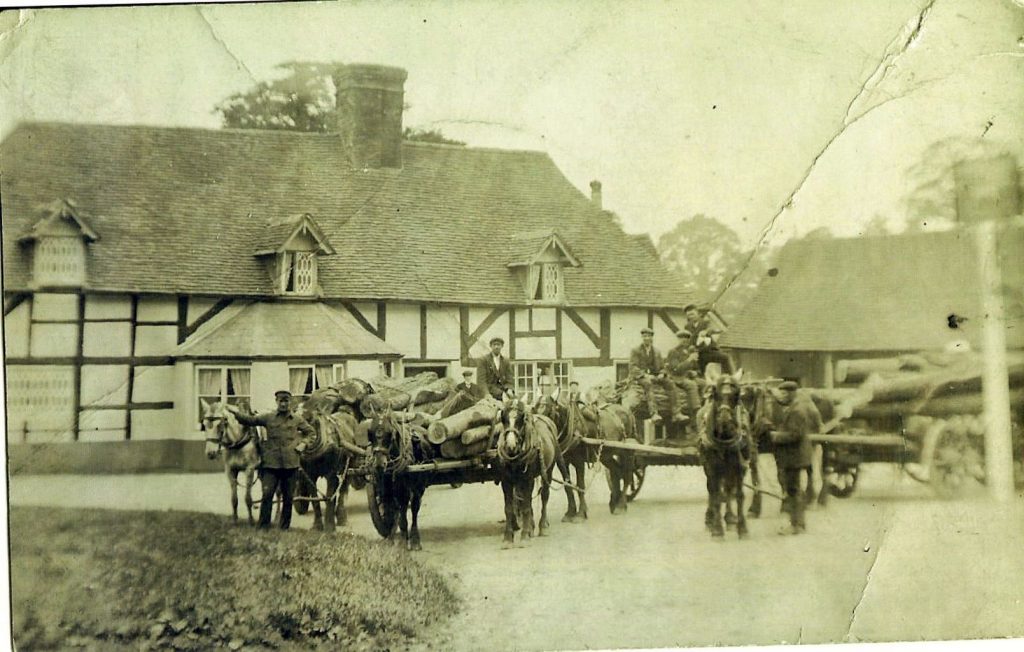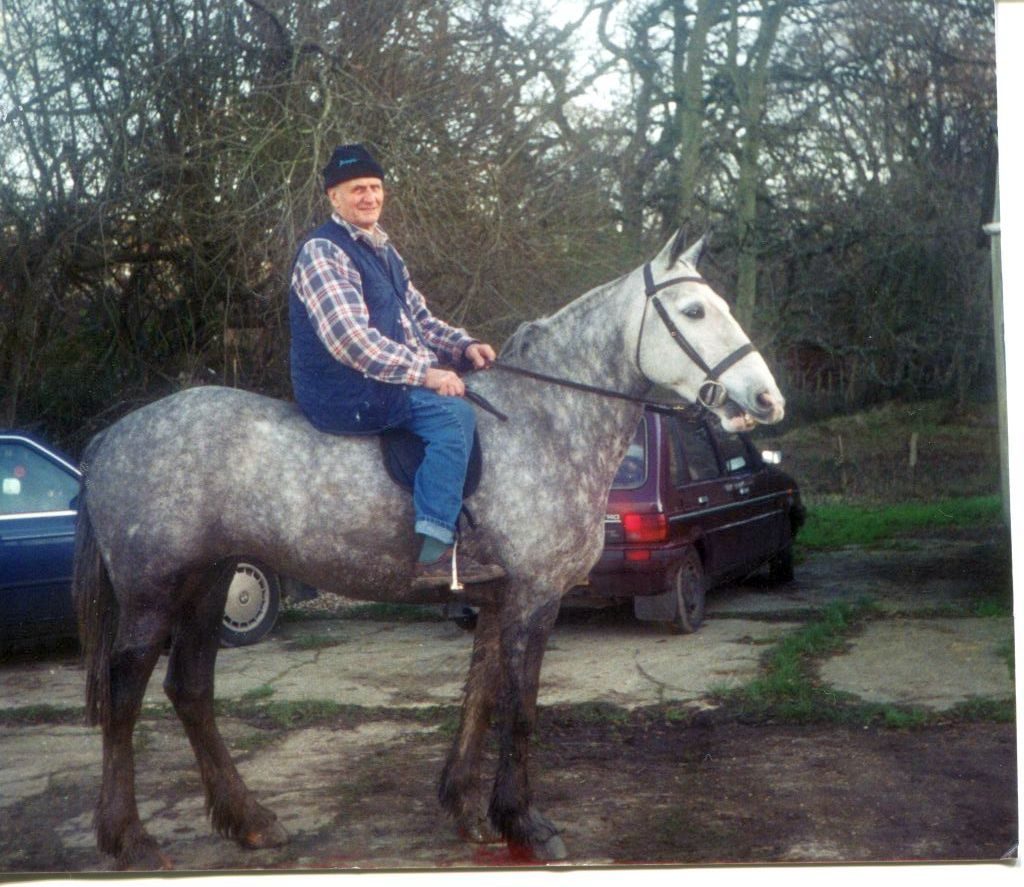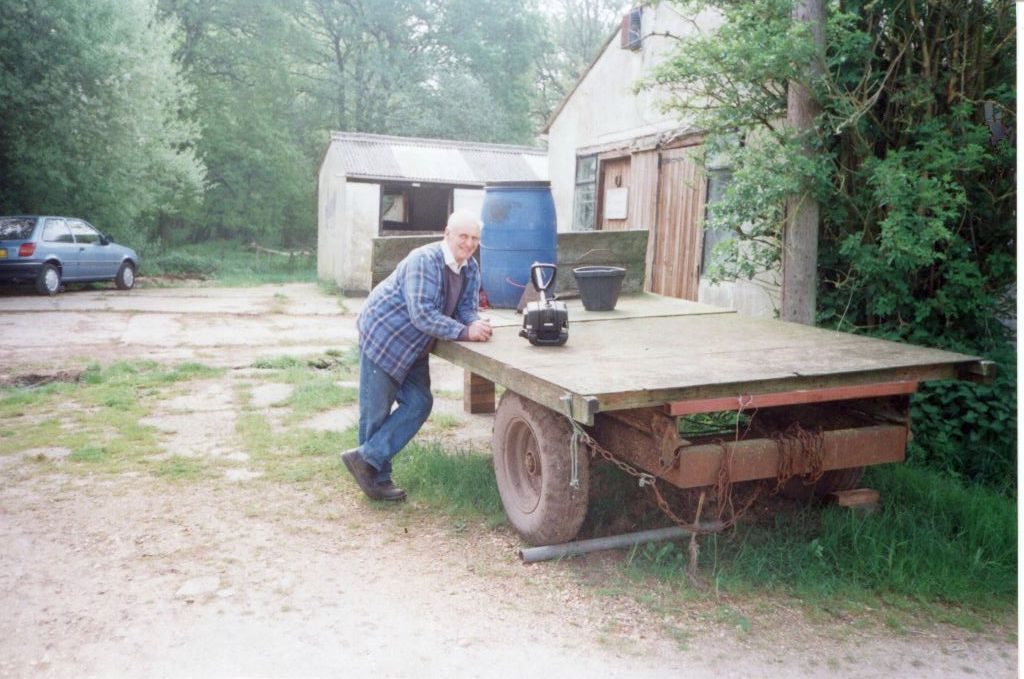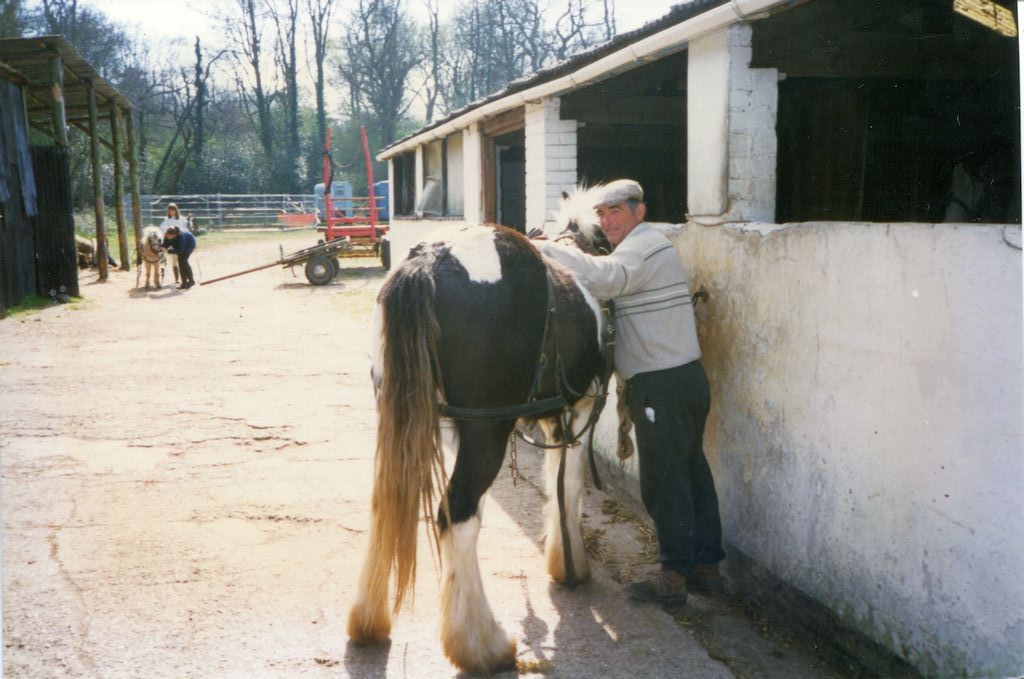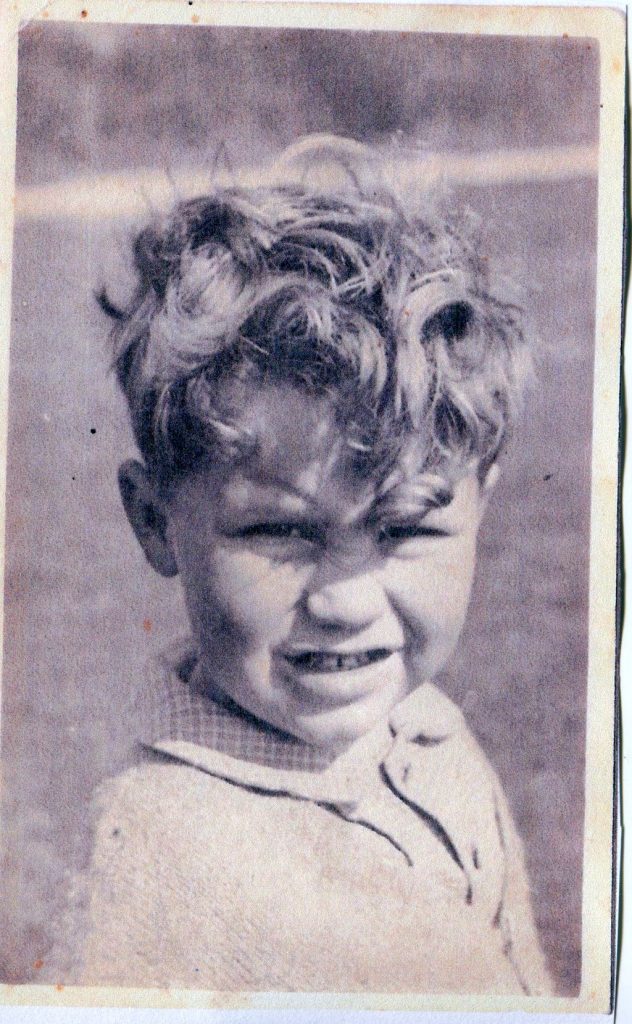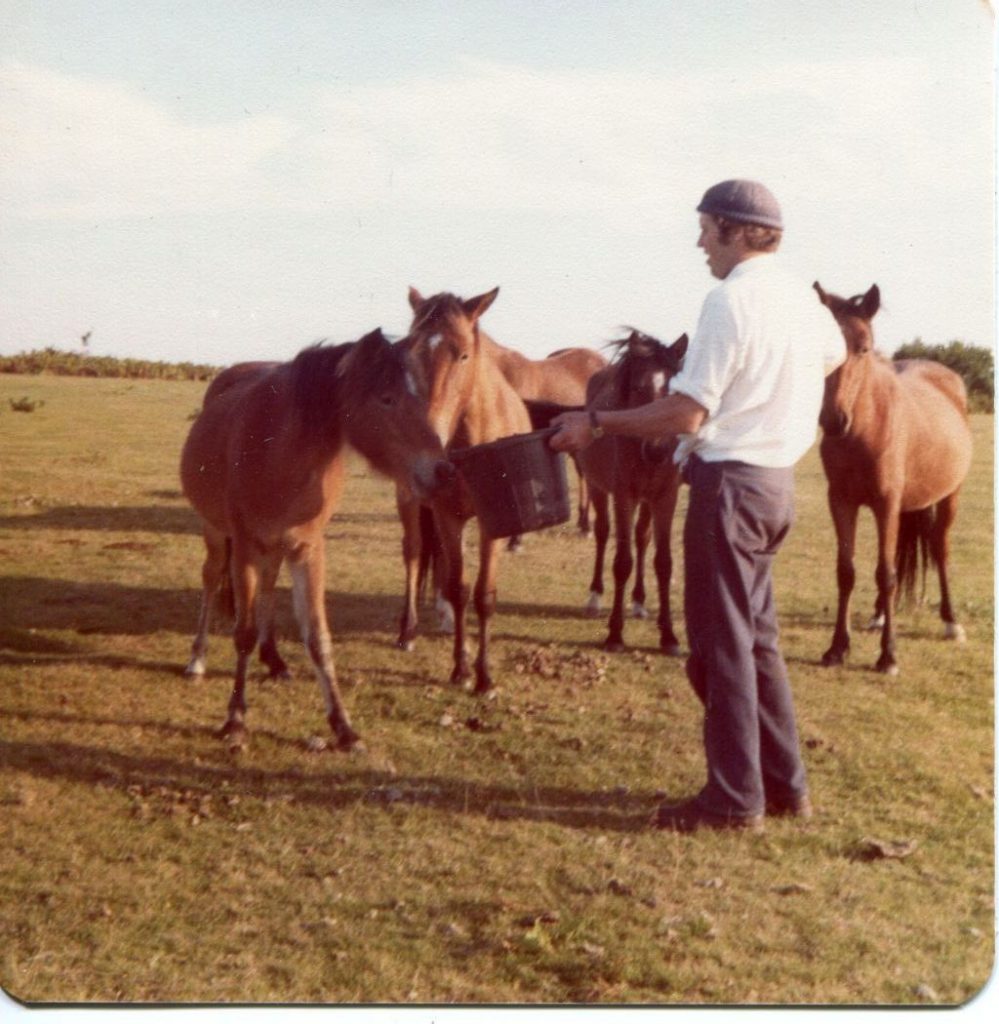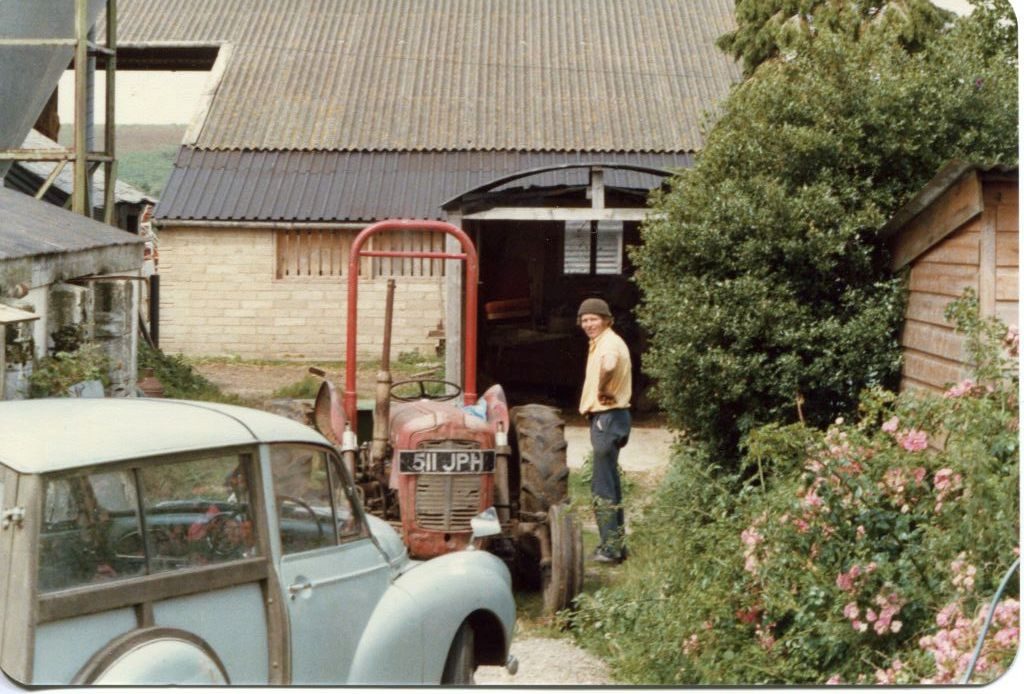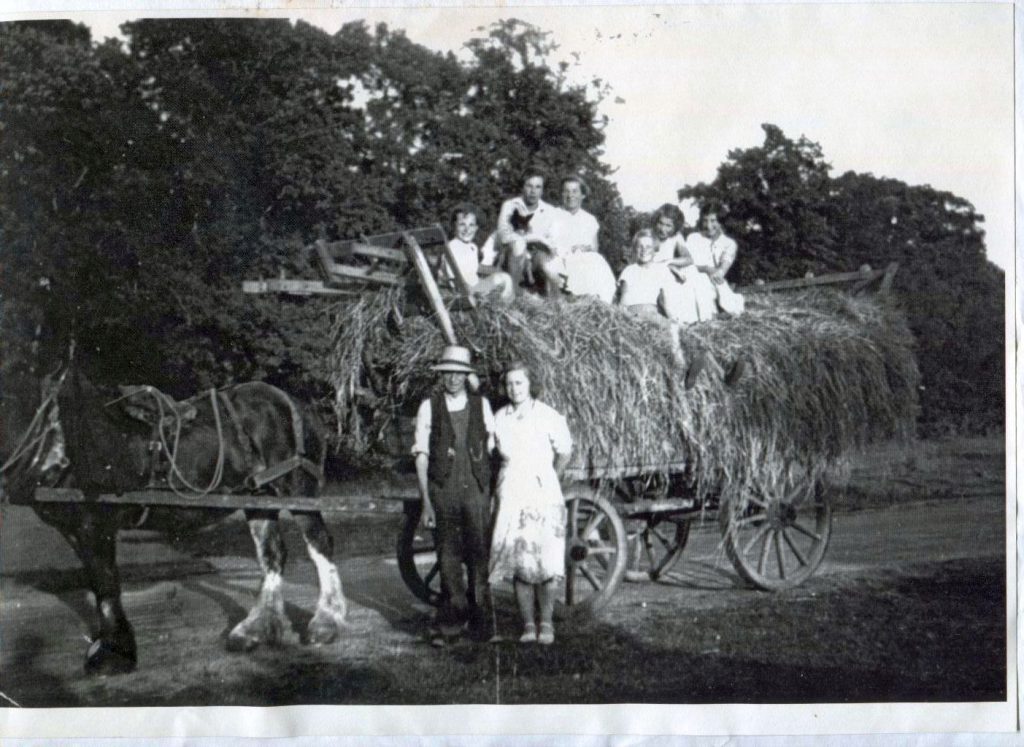Images: Caroline Page, copyright reserved. For any rights requests, please contact the New Forest Heritage Centre in the first instance.
Caroline Stride Trans 1 CH9 Duration: 7:30
CB: Okay. Number thirty-eight (CS038) Aha!
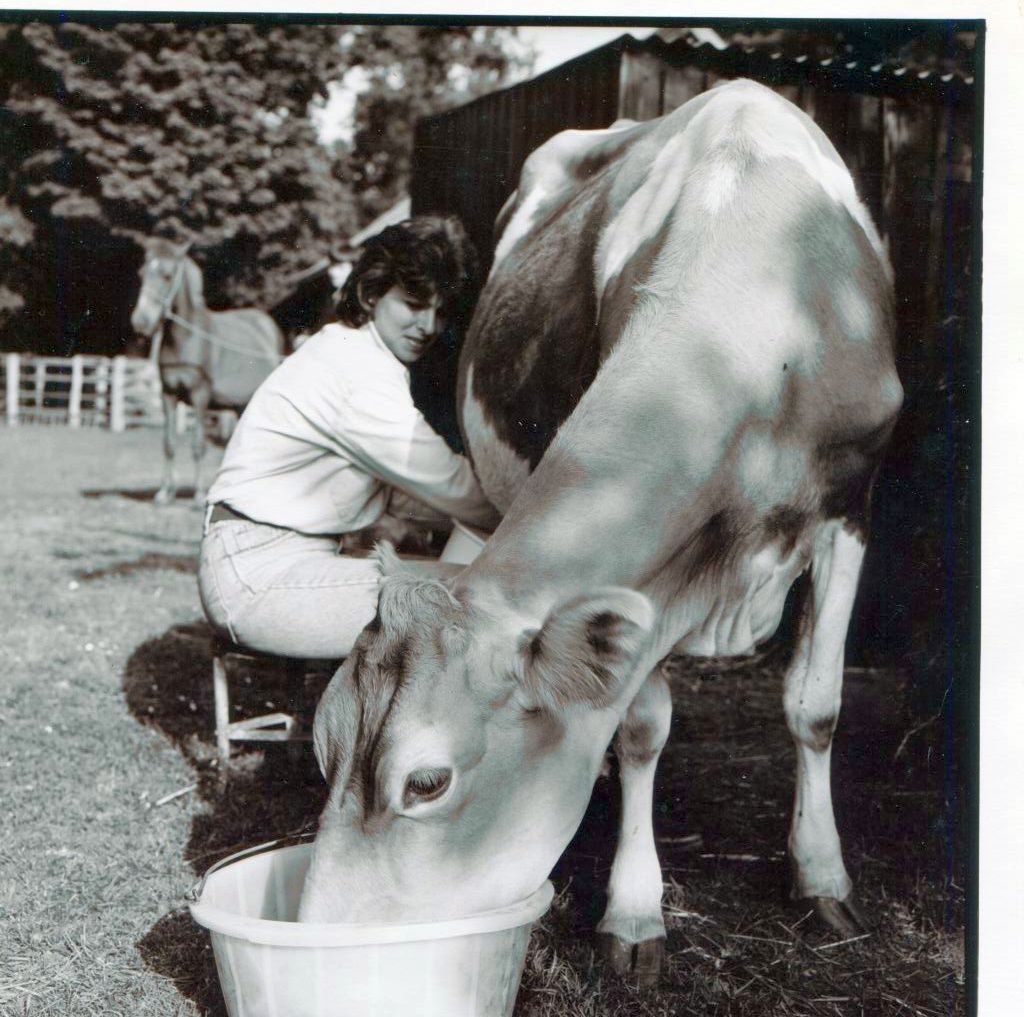
Caroline: Now this was a picture taken – I’m not sure if it wasn’t the same photographer who took this picture. Again, Lily is in the background –
CB: Oh yes –
Caroline: And Andrew is holding on to her there. And this was at Bolderwood Cottage, and we had a house cow, Rosie, who was an absolutely dear cow, she was a Guernsey and I used to milk her for her milk in the cottage and supplied us as a family of five with milk. We used to walk her down because there wasn’t much grazing at Bolderwood Cottage, so we used to walk her down to the Deer Sanctuary, down to the fields and let her graze during the day or between milkings down in the Deer Sanctuary fields. And one of the jobs of the boys before they went to school was to get the cow in so that after I’d got them off to school I could milk the cow. And then, you know, at the end of the day, it would have been the same routine, I’d milk the cow in the evening, and then one of the boys would have taken her out. Normally she would walk down on her own all right but if she felt a bit of a rebel she would give them a merry dance so they’d have to put her in a halter but normally she was quite well behaved.
CB: Lovely. Number thirty-nine (CS039)
Caroline: This is Richard, again I think this is in the early ‘nineties, same photographer – I think he’s a professional photographer, just getting his – you know, finding his way in the world of photography and he came and took these pictures. Rosie the cow in the background with Richard holding the bucket and that was a calf that we bought as – it was as a steer – his name was Fudge, I remember that – and he used to suck the cow for any surplus milk; I’d milk out as much as we needed and then he –
CB: Had the rest –
Caroline: Had the rest, yeah, or I would feed him with the bucket, I’m not sure what happened now.
CB: Number forty (CS040)
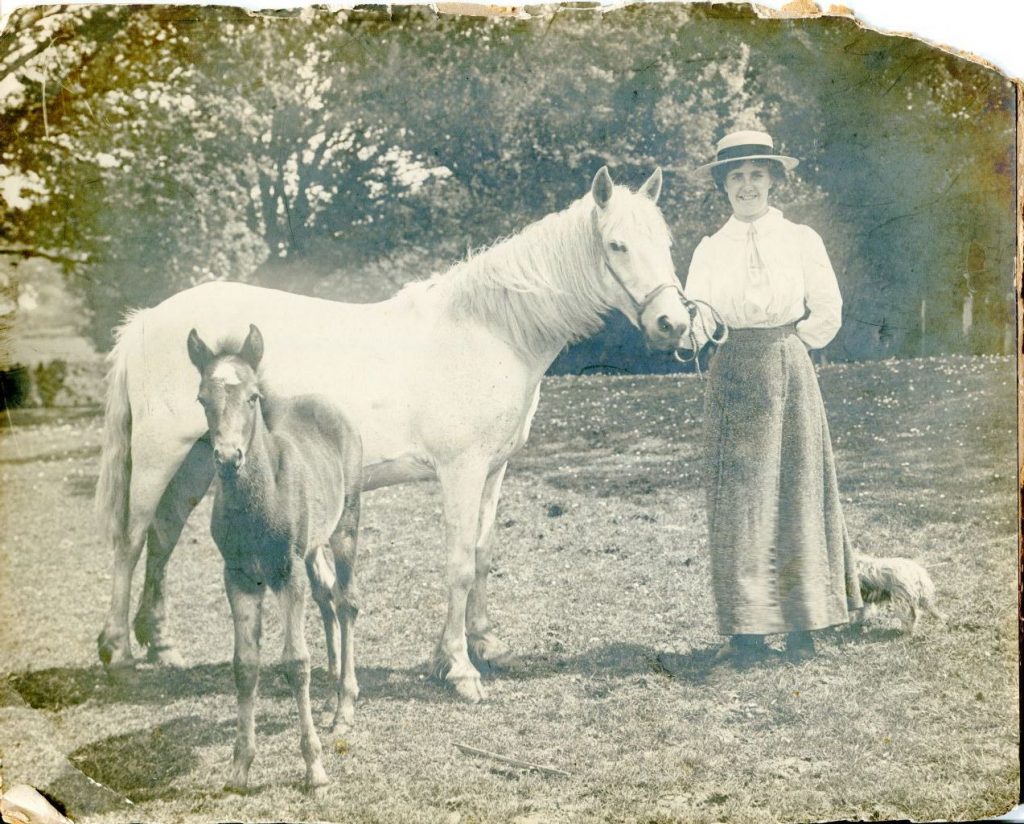
Caroline: Ah. Now this is Aunt Kate outside of Blackwater Farm, Aunt Kate Penny, George Henry’s daughter, Charlie Penny’s sister, and she always enjoyed having her picture taken and she is holding a New Forest pony there. I think possibly it might be Edwardian times, looking at her dress. Certainly it was in her early life, because she didn’t get married until she was a bit older.
CB: Mmm Mmm. Right, number forty-one (CS041) Who are these?
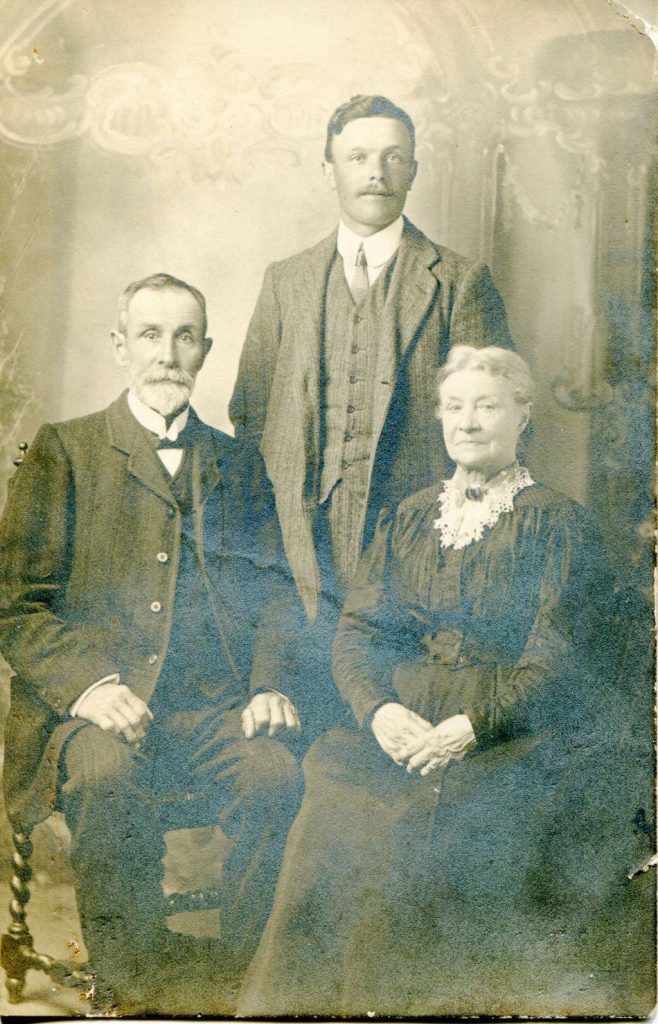
Caroline: Now this picture here shows the Penny family, George Henry posing for one of these Edwardian pictures –
CB: Down the left –
Caroline: Is on the left; the centre I think their eldest son, Bill Penny; and to the right of the picture is Emma and she was mother, George Henry’s wife and they were the first people here, the first farmers at Blackwater Farm.
CB: And when do we think this is
Caroline: This is possibly … late Victorian, early Edwardian times.
CB: Yeah, that’s lovely. Forty-two (CS042) We’ve had this picture before –
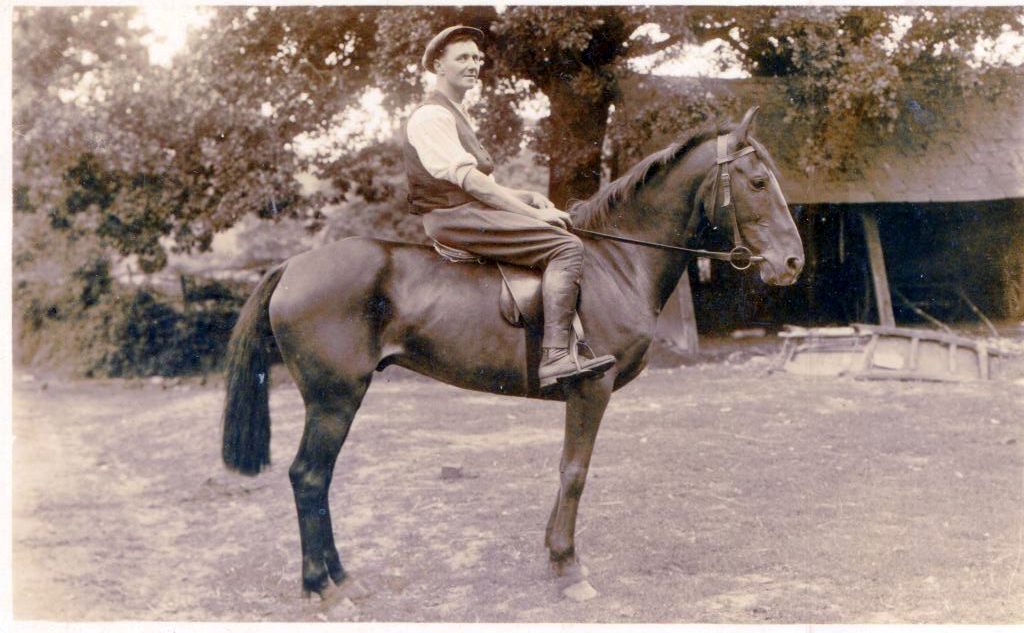
Caroline: We’ve had this picture before, but I will just say it’s Charlie Penny as a young man outside the Blackwater Farm.
CB: Mmm. Forty-three (CS043)
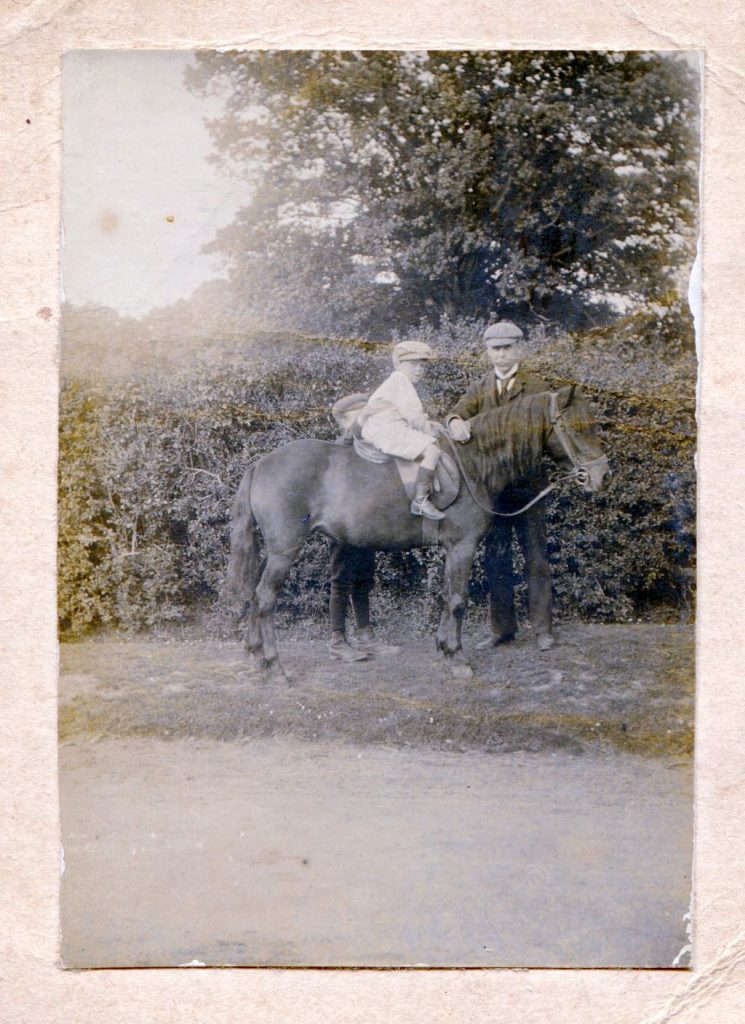
Caroline: Now this again is a picture – I’m not really that familiar with the people in the picture but two, two Penny boys; I’m not sure who was holding on – it might be a man, Mr. Harrison.
CB: Okay.
Caroline: George Harrison – no, not Harrison. George Harris. And he was a chauffeur up in Blackwater House to Mrs. Compton when it was still in the ownership of Minstead Manor. And he used to come down, and this picture was taken just here at Blackwater.
CB: Mmm. Number forty-four (CS044)
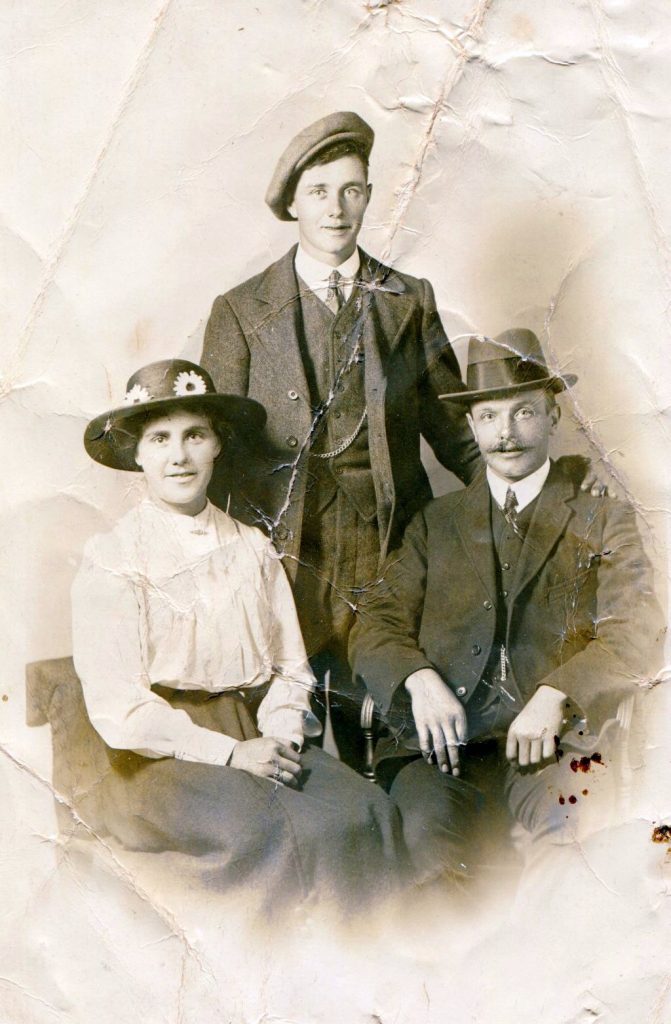
Caroline: Now this is a picture of – a professional portrait of Aunt Kate Penny on the left of the picture; the centre one stood up is Charlie Penny, Richard’s grandfather, and the one to the right is Bill Penny. So that’s brothers and sister.
CB: And what sort of age then?
Caroline: Again I would say early Edwardian, late Victorian.
CB: And number forty-five (CS045)
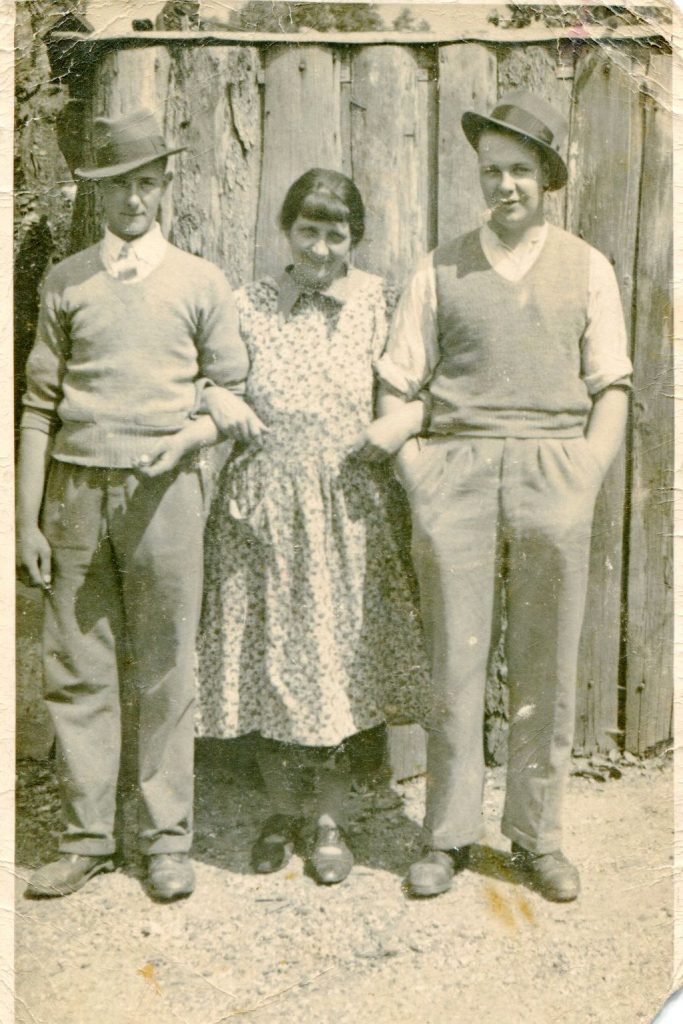
Caroline: Now this is a picture of Agnes Lucretia Penny and that was Richard’s grandmother – Agnes Lucretia Victoria Penny to be precise – and she was stood here at Blackwater with two of her older boys. To the left of the picture is Tom Penny, to the right of the picture is Jim Penny, so those were her two eldest boys.
CB: Okay.
Caroline: Her maiden name was Zebedee and they weren’t Forest people at all. They came from London, but they settled here in Lyndhurst and that’s as a young girl she got acquainted with Charlie Penny and they married and had twelve children.
CB: Forty-six (CS046) We’ve done this one as well.
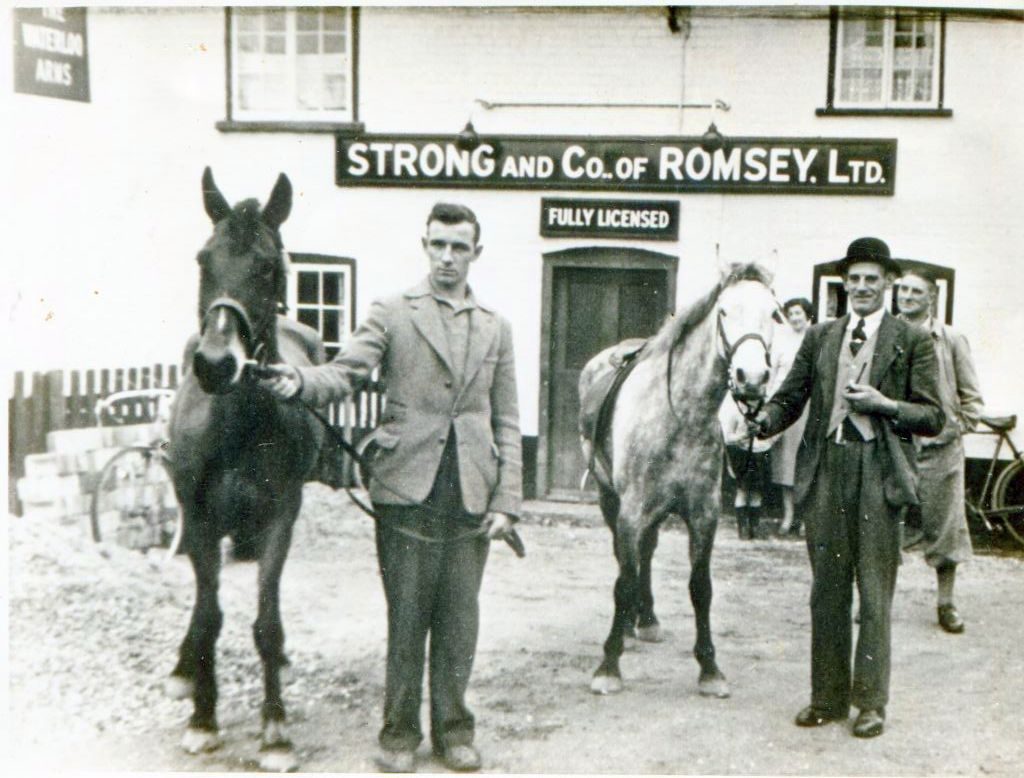
Caroline: Yeah.
CB: Forty-seven (CS047)
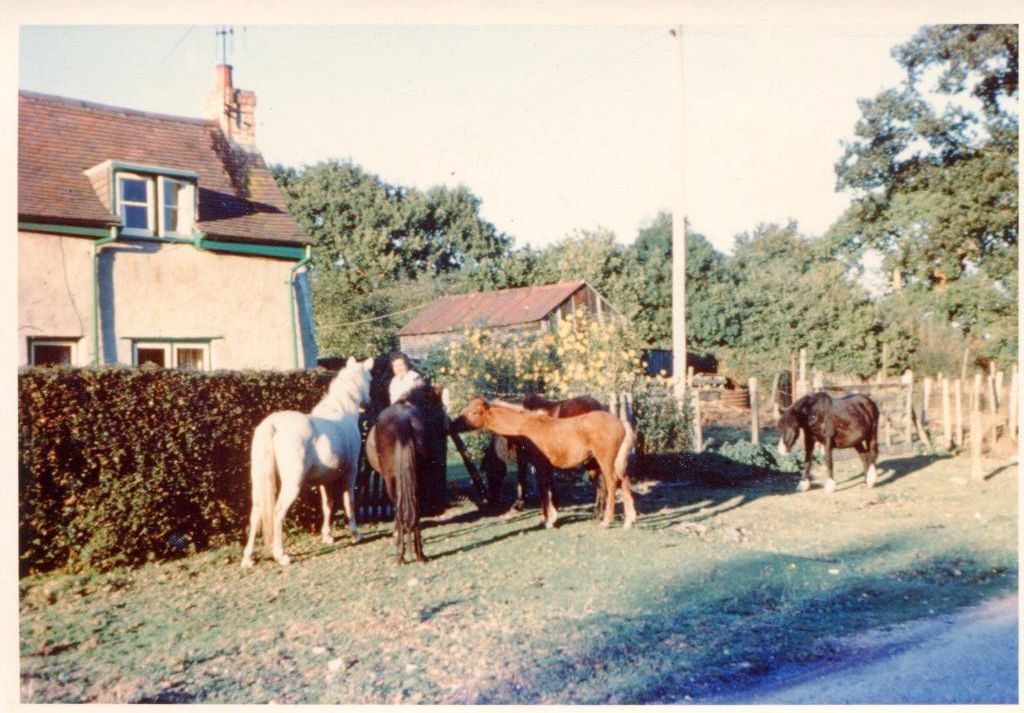
Caroline: Now this is at Minstead, I think it’s Yew Tree Cottage at Minstead; it’s a while, I’m a bit vague because I always think of it as Aunt Kate, Aunt Kate Penny who I’ve spoken about before, Charlie Penny’s sister, in her retirement she moved up to Minstead and lived in this little Minstead Manor cottage, but it was freehold at the time and she kept a few New Forest ponies there, she kept a pig at the bottom of the garden, so she was, in her time, she was a New Forest commoner, a smallholder.
CB: Okay. Forty-eight (CS048)
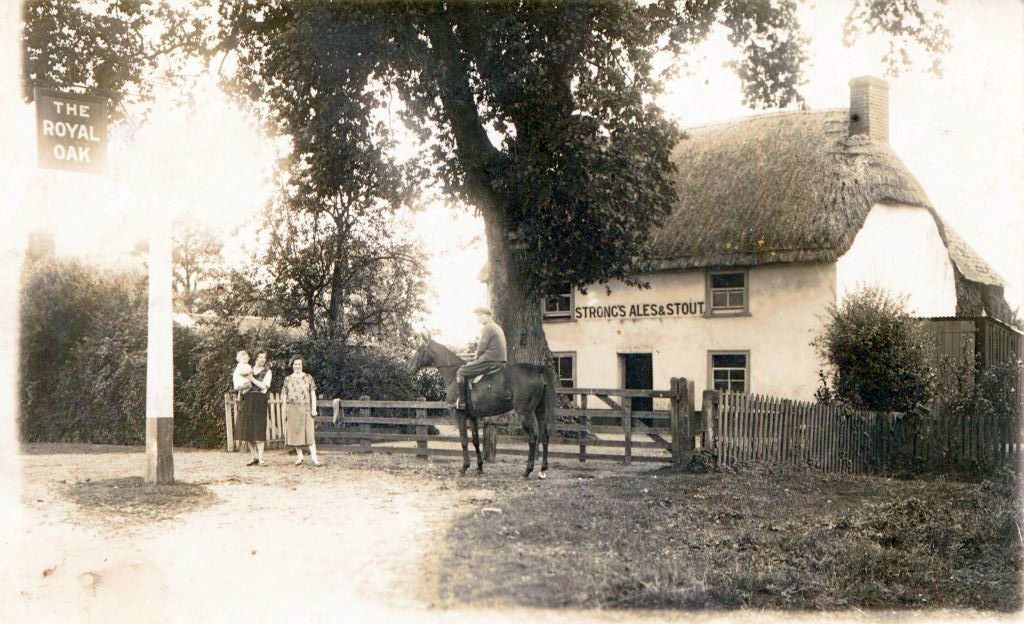
Caroline: Now this is a picture of the Royal Oak at Gorley. Why this is in our collection is the fact that before um …. can we go back?
CB: So. Number forty-eight. (CS048 as above)
Caroline: This picture is of the Royal Oak at Gorley. In our collection this is the very small baby, the child in arms on the picture is –
(Recording ends abruptly)


